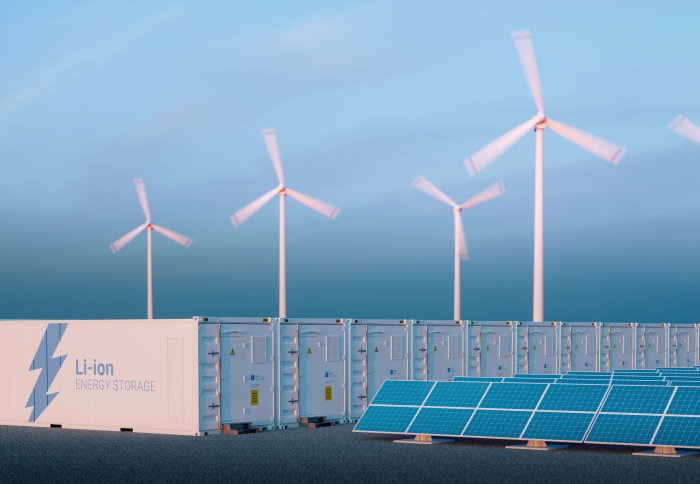Jan 10 2019
A new study has predicted that by 2050, lithium-ion-based batteries will be the most economical way to store electricity, for example, from solar or wind farms.
 Image Credit: Imperial College
Image Credit: Imperial College
The study estimates the cost of storing energy with various technologies, including pumped-storage hydroelectricity and large-scale batteries, and predicts those costs into the future.
On the basis of this model, it has been predicted that lithium-ion-based battery technologies will be the cheapest way of storing energy for a majority of the applications, for instance, ensuring energy grids do not experience large fluctuations and enabling consumers to manage their bills.
These applications are predominantly important in a world that is more greatly dependent on energy sources that may be intermittent—for instance, solar or wind power.
The new study, reported in Joule on January 9th, 2019, by researchers at Imperial College London, could enable policymakers and industry to make a decision on where to invest research and capital to completely exploit energy storage technologies.
The focus of earlier studies of energy storage costs was principally on investment costs. On the other hand, the new study establishes the “levelized cost of storage”—the complete costs of storing energy including investment, operation, and charging cost—as well as efficiency, technology lifetime, and performance degradation.
Our model is the first to project full energy storage costs into the future, allowing predictions of which technology will be most competitive in a particular application at a particular time.
Oliver Schmidt, Lead Researcher, Grantham Institute and the Centre for Environmental Policy, Imperial College
Why Lithium-Ion Wins
Based on the model, currently, the cheapest energy storage mechanism is pumped-storage hydroelectricity, which involves pumping water to a higher altitude with additional energy, and subsequently releasing it to harvest the energy when required.
However, as time goes by, there is no decrease in the costs of pumped-storage hydroelectricity, whereas the costs of lithium-ion battery fall, making them the most economical option for a majority of the applications from 2030.
Flywheel and hydrogen storage technologies also turn out to be the cheapest for specific applications, for instance, when it is necessary to discharge the stored energy over a long time period or when it has to be discharged very often. However, lithium-ion technologies are cheapest for most of the applications.
Our projections show that lithium-ion technologies will see a rapid decline in costs over the next couple of decades. This is driven mainly by the fact that lithium-ion is manufactured at scale. The resulting reduction in initial investment costs is more significant than for other newer technologies such as flow batteries and flywheels, potentially outcompeting any performance advantages of these newer technologies.
Oliver Schmidt, Lead Researcher, Grantham Institute and the Centre for Environmental Policy, Imperial College
Optimal energy storage technologies over time
Changing technology dominance for varying energy storage requirements from 2015-2030. Circled numbers represent the requirements of the 12 energy storage applications. Colours represent technologies with lowest LCOS.
Following in the Footsteps of Silicon Solar Panels
We have found that lithium-ion batteries are following in the footsteps of crystalline silicon solar panels. First-generation solar cells were high performance but very expensive, so cheaper second- and third-generation designs were developed to supersede them. However, sheer economies of scale mean these first-generation panels now cannot be beaten on price. Similarly, lithium-ion batteries were once expensive and only suited to niche applications, but they are now being manufactured in such volumes that their costs are coming down much faster than the competing storage technologies.
Dr Iain Staffell, Study Senior Author, Centre for Environmental Policy, Imperial College
Schmidt added, “This doesn’t mean that these other technologies should be abandoned, but they have to perhaps focus on performance and efficiency, making them the best they can be before being deployed at a larger scale.”
The researchers have made their model open access, thereby enabling academics, consumers, policymakers, and industry to carry out their own simulations with the data for particular applications.